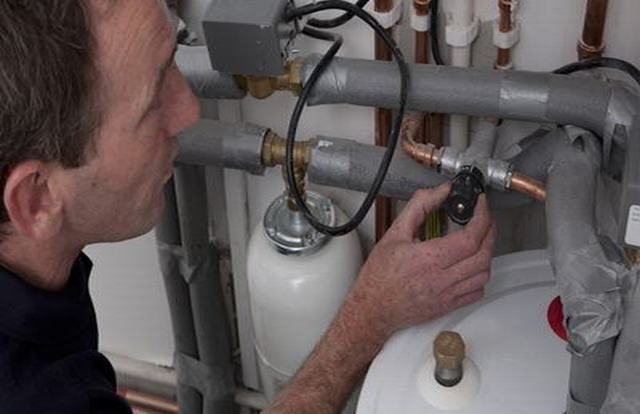March Newsletter 2020
March 2020 Newsletter
‘Coronavirus Crisis: CIPHE issues guidance for trade, £100m Budget fund can prime homes for heat pumps, Redrow founder pledges £1m a week to charities, House-builders use wonderwall smart home tech to reach carbon neutral targets’.
Quick Links
Coronavirus crisis: CIPHE issues guidance for trade
Guidance has been released from the CIPHE in response to the coronavirus outbreak.
It includes advice on personal safety and wellbeing, safety and wellbeing of the customer, insurance cover and liability, legal positions and business help.
The guidance sets out that plumbing and heating engineers should flag up any environment they feel is unsafe and carry out a risk assessment.
“Where you are happy to continue, assume that the premises you are working in and the system you are working on contain the virus, and prepare yourself appropriately,” it added.
Installers were encouraged to extend the use of Personal Protective Equipment (PPE) such as safety glasses, gloves and face masks. Further measures include cleaning tools at the start and finish of any job and then changing and cleaning clothes on returning home, the CIPHE advised.
It was also advised to stay off work for the recommended time even with ‘mild under the weather’, as the virus could be deadly to more vulnerable clients.

Coronavirus crisis: CIPHE issues guidance for trade
Source: HPM Magazine
Working from home due to Coronavirus means wellbeing must be considered
Employers’ concern for staff wellbeing must now go well beyond the traditional workplace, says Tamlite Lighting.
Tamlite Lighting believes that the rapid increase in the number of people working from home as a result of coronavirus (Covid-19) means employers now need to consider the home environment their staff are working in – and in particular their access to appropriate lighting.
A long-time champion of the benefits of more ‘human centric’ approaches to building services, Tamlite Lighting is leading the call for greater awareness of this issue.
Debbie-Sue Farrell, the company’s Head of Wellbeing, comments, “We are living through unprecedented times. With more and more people now working from their own homes, we believe there needs to be a new shift in thinking about how employers can support and maintain their health and wellbeing of their staff.
“Specifically, there is no getting away from the fact that the lighting in our homes was designed for everyday life and is therefore unsuitable for creating a functional working environment. As a result, many home-based workers could well find themselves suffering from eye strain, poor posture and headaches, and in some cases lack of motivation as a direct result of insufficient or gloomy lighting. In order to remain healthy and productive, it is absolutely vital that workers have access to the right lighting, as it is proven to offer a way to enhance their daily experiences.”
Tamlite says there are simple measures that can be taken, such as providing employees with simple, tunable solutions such as its Starlite Connect. This technology – which is ideally suited to the domestic office, or makeshift working environment – allows users to choose the right light for the right activity. It is an intuitive, easy-to-install and flexible lighting system that is backed up by the latest connected lighting technology from WiZ Connected.
“At Tamlite, we stand ready to support and advise any businesses concerned about lighting for their home-based workforce. Even small improvements can make a massive difference to personal performance, creativity, mood and function. These are extraordinary times we want to support companies in any way we can – we’re all in the same situation.”

Working From Home Due To Coronavirus Means Wellbeing Must Be Considered
Source: Electrical Contracting News
£100m Budget fund can prime homes for heat pumps
Worcester Bosch’s communications chief has described the 2020 Budget’s £100m low carbon heating grant as a useful way to “prime” the market for heat pumps.
Martyn Bridges, director of technical communication and product management at Worcester Bosch, was encouraged by the £100m grant for homes to adopt low-carbon heating, but added: “If the £100m fund is to be an outright “donation” to persuade someone to change their heating system to a heat pump for example, then what would that entail? If we take an oil boiler installation and compare with a heat pump installation, then the difference in cost is probably around £3k to £4k depending of course on-site conditions. If the radiators and pipework need replacing as well, which is likely then this goes up even more.
“So £100m divided by the cost difference between the two technologies of say £4k then we could treat 25,000 homes. There are around 1.6m homes in the UK on oil so it won’t make a great difference to the carbon emissions of the UK. It would however “prime” the market, start to get installers and suppliers into the habit of installing heat pumps.”
He said the money would be wiser spent on Hybrid installations rather than the outright substitution of an oil boiler, in such instances.
“So there are promising signs but the devil is in the detail and more guidance from industry will be necessary,” he added.

£100m Budget fund can prime homes for heat pumps
Source: HPM Magazine
Rapid rise in female tradespeople over past decade
There are more than twice as female tradespeople including electricians, plumbers and construction workers in the UK than ten years ago, reveals new analysis1 from tradesperson insurer Direct Line for Business.
The analysis shows that there were an estimated 33,000 female tradespeople in 2019 – a 120 per cent increase on the 15,000 reported in 2009. Over this time the total number of people working in construction, electrical and plumbing has risen by five per cent to 743,000, meaning that whilst women currently account for just 4.4 per cent of all tradespeople, this is considerably higher than the 2.1 per cent representation a decade ago.
When broken down by industry, the majority of female tradespeople can be found in building, with 24,000 females employed in jobs including bricklayers, roofers and scaffolders, accounting for five per cent of the total workforce. There are an estimated 8,000 women working as electricians, accounting for three per cent of all tradespeople and 1,000 female plumbers, accounting for two per cent of those working in this trade.
While the number of women working in these trades has been steadily rising over the past decade, the figures show that female representation is rising at an increasing rate, with more than half of the 18,000 new female workers in construction since 2009 being registered in the last five years.
Nandita Borkakoti, Business Manager for Tradesperson, Direct Line for Business said: “While jobs in construction have traditionally been dominated by men in the volumes employed, it is encouraging to see that this notion is being increasingly challenged, with around 33,000 women across the UK currently working as builders, electricians or plumbers.
“With around 34,000 more tradespeople in the UK now than a decade ago, we hope that the coming decade sees further inroads being made for women in trade businesses, as the focus shifts away from gender and towards ability and expertise. It is important for any new entrants to the industry to have the strongest foundation possible to start work, with an insurance policy that can be tailored so that they only pay for what they need to include a range of covers such as public liability, employers’ liability or for cover for their tools including when left in their work vehicle overnight.”
Table One: Estimated number of male and female workers in selected construction trades, 2009-2019
| Timeframe | Industry | Builders | Electricians | Plumbers | All |
| 2009 | Men | 437,000 | 192,000 | 65,000 | 694,000 |
| Women | 10,000 | 4,000 | 1,000 | 15,000 | |
| Total | 447,000 | 196,000 | 66,000 | 709,000 | |
| 2019 | Men | 428,000 | 230,000 | 52,000 | 710,000 |
| Women | 24,000 | 8,000 | 1,000 | 33,000 | |
| Total | 452,000 | 238,000 | 53,000 | 743,000 | |
| Change | Men | -2.1% | +19.8% | -20.0% | +2.3% |
| Women | +140.0% | +100.0% | +0.0% | +120.0% | |
| Total | +1.1% | +21.4% | -19.7% | +4.8% |
Based on population projections2, there are expected to be a further 221,000 more women of working age (18-65) in the UK by 2029. If the proportion of working women in construction remains constant over this time it could result in a further 5,700 women in the industry by 2029. However, if the industry sees the same rate of growth as it has done since 2009, then there could be as many as 51,000 women in construction by the end of the next decade.
When looking at mean wages for tradespeople, women are still paid less than their male counterparts, though the analysis reveals that trade professions are more equitable than other industries. Female tradespeople earn an average of 11.3 per cent less than their male counterparts. With the average salary for male tradespeople standing at £32,755 in 2019, this translates into an income of around £3,700 less for women tradespeople than for men. This is lower than the gender pay gap across all industries, which in 2019 stood at 16.2 per cent.

Rapid rise in female tradespeople over past decade
Source: Electrical Trade Magazine
Funding deal for Sheffield scheme despite global crisis
Student accommodation specialist Future Generation has refinanced a £39m development loan that will help fund construction of the third phase of a major Sheffield scheme.
It comes at the end of a remarkable five days of dealmaking for the firm, which — despite turmoil in global markets due to coronavirus — saw it secure another £55m development loan to construct two other student schemes in Loughborough and Nottingham.
The third phase of Steel City will create 19 short-let serviced apartments — in addition to the scheme’s existing 324 bedrooms — to be used by parents and friends visiting student tenants.
The concept is designed to make it much easier for students living away at university to maintain relationships with friends and family.
The £35m scheme also boasts an interactive fitness studio plus Future Generation’s signature Sky Lounge — a rooftop social space where students can relax, interact and enjoy cityscape views.
Construction of the third phase is expected to be completed by the spring of 2021 and a construction partner is yet to be chosen.
Clegg Construction built the previous phases of the former steel workshops conversion in the St Vincent’s Quarter.
Andrew Southern, chairman of Southern Grove and Future Generation, said: “The fact that these funding facilities are still coming together, even with Covid-19 wreaking havoc on industry and economies around the world, is testament to the long-term security of the student accommodation sector in the UK.
“We are going to weather this storm and come out of it even stronger, with positive consequences for the incomes of those firms and workers who help us to make these developments a reality.
“The completion of Steel City will also be an incredibly proud moment for me personally. Sheffield is my home town and I still have plenty of family and friends there.”
McAleer & Rushe has just started work on the Luxurio in Loughborough and The Vantage in Nottingham, which between them will create 943 student beds close to top-tier universities.
The £45m Luxurio development in Loughborough will contain 458 bedrooms.
London and Cardiff-based Rio Architects were appointed to design the mixed-use scheme which will include landscaped grounds, communal courtyards, roof terraces and green living walls on the outside of the building.
The development at Aumberry Gap will range from three to seven storeys and contain 1,700 sq m of commercial and reception space.
The £48m Vantage development in Traffic Street, Nottingham, will provide 485 bedrooms.
Designed by Axis Architecture, it is arranged over 12 storeys and will be one of the city’s tallest buildings.
The Vantage will boast Future Generation’s signature Sky Lounge which will make the most of views over Nottingham Castle.

Funding deal for Sheffield scheme despite global crisis
Source: Construction Enquirer
Redrow founder pledges £1m a week to charities
Redrow Homes founder Steve Morgan is pledging to channel £1m a week to charities hit by the coronavirus outbreak.
he cash will be distributed through the Steve Morgan Foundation to charities in Merseyside, Cheshire and North Wales.
Morgan, who founded Redrow in 1974, has also urged other entrepreneurs and philanthropists to do the same.
“The £1m per week will go into a war chest because we are at war against coronavirus,” he said.
“People who know me know I don’t like the limelight but now is not the time to hide in the shadows.”
The father-of-six made the decision despite seeing an estimated 50% wiped off his own fortune in the past month by the economic crash caused by Covid-19 but said it wasn’t important compared to the humanitarian crisis the world was facing.
He said: “Aside from the obvious difficulties that the charities are facing, supporting thousands of disadvantaged people, this crisis has already caused substantial cashflow issues. Normal day-to-day fundraising efforts that the charities undertake have been pulled from under them.
“The London Marathon alone puts around £65m into the charitable sector.
Morgan said that the foundation had already been approached by more than 50 charities desperately needed funding. One in just one day had 248 additional people register for their foodbank.
“As the economy shrinks it will be the charities and the vulnerable people who suffer first and we can’t allow that to happen.
“We wish we could help the whole of the UK but we can’t. Our Foundation is committed to helping charities in Merseyside, Cheshire and North Wales and we’ll continue to do that. We urge others across the UK to follow suit.”

Redrow founder pledges £1m a week to charities
Source: Construction Enquirer
£250m film studio plan for Kent
Urban regeneration specialist The Creative District Improvement Company (TCDI Co.) is teaming up with developer Quinn Estates to announce a £250m investment in a Kent TV and film studio.
The project will restore five at-risk Grade II listed-buildings in Ashford and convert them into 80,000 sq ft of TV and film studios, 80,000 sq ft of ancillary production space, 50,000 sq ft of mill store and 30,000 sq ft of media village.
Plans also include the Future Media Centre educational hub, a 120-room hotel, 68 serviced apartments, a creative industries conference centre and a 10,000 sq ft gym, restaurant and leisure space.
TCDI Co. and Quinn Estate are collaborating with architects Guy Holloway to deliver the project scheduled for 2021.
Piers Read and Jeremy Rainbird, Founders of The Creative District Improvement Co. said: “It is a dream come true to regenerate an area that we have a close personal connection to and to provide such exciting employment opportunities.
“As we emerge from COVID-19 there will continue to be unprecedented demands for stage space and a demand for skilled workers which will continue to grow.
“With A.I. constantly encroaching into the UK employment sector, the creative industry is one of the only industries that robustly defends itself from mass unemployment.
“British TV and film making is the best in the world thanks to facilities like Ashford International Studios. This is set to remain the case for decades to come”.
TCDI Co. has previously announced plans to extend the current success of Twickenham Studios in a £50m development that will include film stages, flexible workspace for creative industries with new event and hospitality space.

£250m film studio plan for Kent
Source: Construction Enquirer
How to select the most appropriate heating system for the job
Boilers are at the very heart of a heating system which is why the correct specification is so important. In recent years, technology and innovation has led to significant changes in boilers as the focus moves to towards eco-friendly and energy efficient products. Jonathan Kidner, Product Engineer at Alpha Heating Innovation, provides insight into boiler specification and why the ability to understand a customer’s needs will go a long way when it comes to the selection of the most appropriate heating systems.
Installers should consider the size of the boiler and its output as it makes no sense choosing a boiler with insufficient kW output to cope with the heating and hot water requirements of a family home. Under-specifying will lead to the boiler being unable to match the demands of the household; but be careful not to over-specify either, as this will waste energy and make the boiler less efficient.
With heating accounting for approximately 55% of the total spend on energy bills each year according to the Energy Saving Trust, the energy efficiency of a boiler is a key consideration for any customer. There are plenty of low carbon options in the marketplace, but instead of a radical overhaul of a traditional heating system, products such as Alpha’s GasSaver, FlowSmart and SolarSmart maximise domestic heating and hot water system performance to achieve significantly improved energy efficiency and carbon emissions levels. In addition, smart thermostat controls can make it easier than ever for homeowners to control their heating from anywhere using a smart device. It means a home can be monitored 24/7 and only heated when needed, saving energy and money in the long run.
Warranties
While a standard one-year warranty is a given with all boilers and can often be extended, many leading manufacturers are now offering extended warranties of up to 10 years on premium boiler models. Similar to an insurance policy, it’s important to read the terms and conditions of a warranty. A yearly service is a requirement of a warranty and will keep a boiler in good repair, so that in the event of an internal fault, the customer will be protected and will have any problems rectified in a timely and satisfactory manner.
Technical support is often much under-valued and is a service which goes beyond answering the phone to queries and complaints. Most manufacturers offer pre-sales and aftersales support, including on-site support for those tricky installations. They can also provide the most up-to-date information regarding new products, legislation and general design/installation advice. It’s why Alpha Heating Innovation places so much value on the technical support it provides boiler installers and their customers.
Lastly, always encourage your customer to register their boiler once it has been installed, so it is traceable. It will reflect badly on the installer and the company if the homeowner rings to inform their boiler isn’t working and the manufacturer has no record of it.

How to select the most appropriate heating system for the job
Source: Installer Online
80% of companies to invest in warehouse tech as online shopping surges
High street retailers have seen footfall decrease over recent years as online sales become the more popular and convenient way to shop. E-commerce is growing rapidly across the world and is changing the way people shop – as consumers and as businesses – meaning warehousing and logistics have become critical for all manufacturers and retailers to get right.
In order to achieve this, technology is being used to tackle core challenges so that suppliers can satisfy demand and ensure their business is working efficiently. A recent global study found that 80% of companies were intending to invest in new warehouse technology as part of their strategy to become more competitive, with 60% of those reporting challenges due to inadequate labour efficiency and productivity.
It is the responsibility of companies like EcolightingUK to inform facilities managers and warehouse managers about their options, and provide a solution that is best for them. As experts in the field, Ecolighting needs to ensure that businesses think about the life-cycle costs of their lighting technology in the same way as they do with their materials handling equipment (MHE).
It is estimated that MHE accounts for around 25% of a warehouse’s annual energy expenditure, while the cost of lighting the building with old fashioned or inappropriate lighting technology will make up 70% of the bill.
This is why lighting is one of the most important investments a business can make. When upgrading the lighting technology within a distribution centre or other industrial building, too many facilities managers fail to consider the whole life and install costs of the luminaires they are specifying and instead opt for the cheapest product available.
By doing so, they could be costing their companies thousands of pounds in higher energy bills and significant ongoing maintenance costs, not to mention the often overlooked return on investment period.
By making that very common mistake and choosing substandard fittings, they may think they are saving money on energy, but then those savings are spent on maintaining and replacing the luminaires. This is why facilities managers need to realise that the cost of ownership is a big factor in the savings to be had in the long term.
Retailers have many issues when it comes to warehouse optimisation and are prioritising speed. Customers want their orders as soon as possible, so in response 82% of retailers are looking to implement regional or last mile fulfilment centres which are closer to their customers. This means a larger number of potentially much busier warehouses to manage.
This is why when it comes to creating a lighting scheme for a large and busy warehouse, introducing luminaires with a slightly higher wattage but a clever optical design will mean that fewer fittings are needed to provide a better quality of light, and fewer fittings means reduced energy consumption, reduced product costs, reduced install costs and reduced, if any, maintenance is the better option.
Lighting accounts for nearly 6% of global CO2 emissions, so a global switch to energy efficient light emitting diode (LED) technology could save over 1,400 million tons of CO2 and avoid the construction of 1,250 power stations.

80% of companies to invest in warehouse tech as online shopping surges
Source: Electrical Contracting News
Plumbing and heating operatives to be ‘key workers’
The government has classified plumbing and heating professionals as ‘Key Workers’ and as such the children of plumbing and heating workers will be prioritised for education provision.
CEO John Thompson says the APCH had been discussing with the government the possibility of assigning Key Worker status to plumbing and heating contractors and fully welcomes this action.
“I’m glad the government recognises the essential frontline work that plumbing and heating professionals carry out and the direct role they play in keeping society healthy, warm and safe,” says John Thompson. “If plumbers and heating engineers weren’t allowed into properties or attend sites to fix breakages, this could have led dangerous heating systems and unsafe drinking-water and sanitation facilities.”
The government’s advice states that parents whose work is critical to the COVID-19 response include those in working in utilities which covers the oil, gas, electricity and water sectors, including sewerage.
Official advice stresses that every child who can be safely cared for at home should be. However, Key Workers who cannot keep their child safe at home will be prioritised for education provision.
Education provision is also available for vulnerable children including children who are supported by social care, those with safeguarding and welfare needs, including child in need plans, on child protection plans, ‘looked after’ children, young carers, disabled children and those with education, health and care (EHC) plans.
Plumbing and heating employers can inform their employees that their role as a plumbing and heating engineer is necessary for the continuation of this essential public service and therefore are eligible for education provision.
“If your or your employees’ school is closed then you can contact your local authority, who will seek to redirect you to a local school in your area,” adds John.
COVID-19 procedural guidelines
Continuing to work in the current environment means that plumbing and heating engineers may come into contact with people who have the COVID-19 virus. To help mitigate the potential risk of COVID-19, APHC has developed a number of recommended procedures.
“We have worked with our members to devise risk assessments and a number of key procedural working practices to adopt before, during and after each appointment where a household contains people with the COVID-19 virus or where occupants are considered to fall into the government’s vulnerable group. These actions have been designed to help protect the public and our members from catching and spreading Coronavirus,” says John.
APHC members can access the COVID-19 procedural guides and templates from the members’ area of the APHC website at www.aphc.co.uk/members. APHC members who require specific advice can contact APHC directly on 0121 711 5030.
The government’s ‘Guidance for schools, colleges and local authorities on maintaining educational provision’ can be read here.

Plumbing and heating operatives to be ‘key workers’
Source: PHAM News
House-builders use wonderwall smart home tech to reach carbon neutral targets
Wondrwall’s solution is a light switch that houses 13 different sensors covering temperature, humidity, power, motion, luminosity and sound. Replacing standard light switches throughout the home with Wondrwall switches creates a network of over 100 sensors with predictive modelling and machine learning, automating habitational patterns, as well as the home’s overall efficiency and performance.
According to a study by the Fraunhofer Institute for Building Physics, smart thermostats like Wondrwall can reduce energy consumption and costs by up to 31% by not heating empty homes. Wondrwall takes this a step further by detecting when a room is empty, automatically reducing energy consumption and lowering the overall cost for heating by up to 50% without sacrificing comfort.
Wondrwall infrared heater panels are also more efficient as they heat the occupants and objects in the home such as carpets, ceilings and furniture. Every 1°C reduction in a home’s air temperature can save as much as 10% on its heating bills. Since the infrared panels heat the occupants and objects in the home rather than the air, they keep the occupants warm at a lower air temperature than standard heating.
Conventional hot water tanks heat all the water in the tank, regardless of how much is needed. The Wondrwall hot water cylinder monitors and learns how much hot water is used and only heats as much as needed, significantly reducing energy consumption.
Around 14% of UK greenhouse gas emissions come from our homes, and a ban on gas heating in new homes by 2025 has already been announced to help cut carbon emissions caused by traditional gas boilers.
Wondrwall now offers a smart alternative to both gas boilers and more expensive and less effective alternatives such as heat pumps. The Wondrwall solution costs the same to install in new homes as current gas heating and hot water solutions and considerably less than alternative electric heating solutions.
One of the worries about the government clamp-down on gas and other fossil-fuel boilers is that electric alternatives are generally more expensive to run. Research conducted on behalf of the National Infrastructure Commission estimated that the ban on gas heating would cost families up to £300 extra a year on energy bills. Wondrwall’s smart energy generating technology, however, ensures that the system is used optimally to provide a comfortable living environment, cut energy usage and keep bills down.
It’s not only new-build housing schemes that can benefit from the Wondrwall solution. The system can be retrofitted to a three-bedroom house from £4,990, bringing those same advantages within reach of every householder.
Burton has seen demand for his product increase tenfold in the past 18 months:
“The network of partners we are working with is expanding rapidly, our latest being Keepmoat, Sigma, Tailored Living Solutions, Sassy, McCulloch and Shanly Homes. By combining clean energy generation, storage and AI powered home automation in one unique streamlined system, they can create a USP for their buyers and it’s paying off.
“Our mission with our system has been to give the home a brain and the intelligence to control itself to help improve people’s lives. I never built this company to make a huge amount of money. I built it to make a difference to the world – to build homes that create their own energy, store it and use it.”
Craig Murphy, regional managing director of Keepmoat Homes, adds: “Climate change is a key challenge facing everyone and that’s why we’re not only proud to support a zero carbon future, but also help find practical solutions that tackle the rising energy costs of our customers.”
Robert Cox, recently purchased a Watkin Jones house in Macclesfield with his partner, that has Wondrwall technology installed throughout.
“When we purchased our new home and the sales advisor took us through Wondrwall, it really intrigued us,” said Cox. “We had Alexa before, and could instantly see the appeal. It helps save money on energy bills, but the real impact is just the ease of having everything on autopilot. We live busy lives and the time saving ability is huge. If I had two houses like for like, the Wondrwall system would be the deal maker.”

House-builders use wonderwall smart home tech to reach carbon neutral targets
Source: Electrical Contracting News
Eutopia Homes to create £130m Exeter urban village
Eutopia Homes has secured planning permission for a new sustainable ‘urban village’ on a 15-acre brownfield site previously owned by Network Rail.
Designed by architects Darling Associates have been approved by Exeter City Council for the £130m development.
Construction will create a new intergenerational community in the heart of the city with 400 new homes for rent and sale.
Future residents will benefit from new outdoor spaces such as public gardens, squares, footpaths, a woodland walk and fitness trail.
The approved plans also ensure the conservation and continued use of a locally listed former water tower, which will act as a local landmark.
Start on-site is due later this year. Eutopia Homes acquired the site from Network Rail in October 2018 with Chenavari Investment Managers.
Eutopia Homes also recently announced a £105m scheme in Salford, Greater Manchester that will deliver 500 homes close to MediaCityUK.
Scott Hammond, founder and CEO at Eutopia Homes, said: “Our plans will see the creation of a new urban village right in the heart of Exeter and will support the city’s long-term growth by providing much needed housing across a range of tenures and price-points.
“The whole design of the scheme was led by a commitment to sustainability and green place-making, turning a long dormant brownfield site into a thriving mixed community that serves people of all ages and incomes.
“The positive comments made by the planning committee, who praised the design ethos of a lower car dependency scheme, will help set new benchmarks for future development in Exeter.”

Eutopia Homes to create £130m Exeter urban village
Source: Construction Enquirer
Plan for 350-home Wolverhampton canal quarter
Build to rent developer Placefirst has revealed its plans for a canalside project of 350 homes in Wolverhampton city centre.
The site on five acres of brownfield land off Lower Horseley Fields will feature a mix of new build homes and restoration of heritage properties with the historic canal basin.
Placefirst will submit a planning application to the city council in coming months and if permission is granted, construction is due to start later this year.
The scheme represents the first for the build to rent specialist in the Midlands, following its delivery of a range of projects across the North West, Yorkshire and the North East.
David Mawson, chief executive officer of Placefirst, said: “Placefirst is working with City of Wolverhampton Council to deliver its ambitious vision for the Canalside Quarter and kickstarting the multi-billion pound regeneration of the city.
“We have developed our plans for the Canalside Quarter within the wider transformational framework set out by the council.”

Plan for 350-home Wolverhampton canal quarter
Source: Construction Enquirer
Vistry and Clarion launch £400m housing scheme
Vistry Group and Clarion Housing Group have formed a new joint venture to build 1,000 homes on a £400million development at Collingtree, near Northampton.
The mixed tenure development will comprise 700 homes for private sale alongside 300 affordable homes.
Vistry Group and Clarion will also make a significant investment in social infrastructure, providing a number of facilities to support the local community.
A total of £18m will be invested to support the building of a new primary school and a community centre. Construction at the site is expected to begin this month.
John Lougher, Strategic Land managing director at Bovis Homes – part of the newly-formed Vistry Group – said: “We are delighted to announce the joint venture with Clarion Housing Group to deliver much-needed homes in the area and look forward to working closely with them. Local house hunters will benefit from a wide range of stunning homes within a popular, easy-to-reach location.
“The range of housing on offer – from one-bed apartments to five-bed houses – means the development will appeal to a wide range of people at different stages of their lives, creating a real sense of community.”
Richard Cook, Group Director of Development at Clarion, added: “This is our fourth joint venture with Vistry Group, as we continue to build a relationship with shared values and a common commitment to creating sustainable and mixed communities.”

Vistry and Clarion launch £400m housing scheme
Source: Construction Enquirer














































